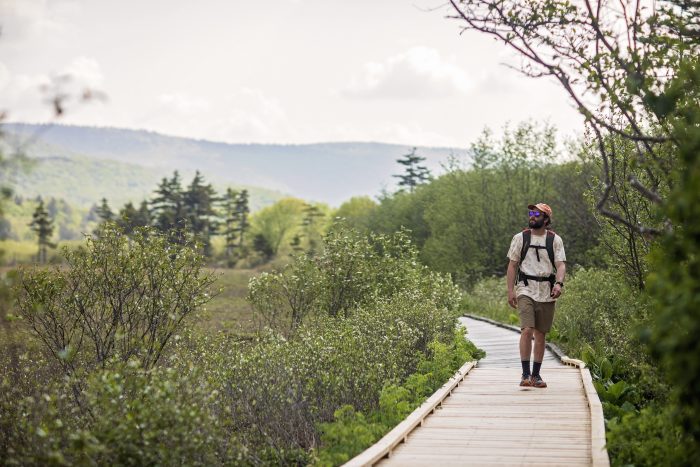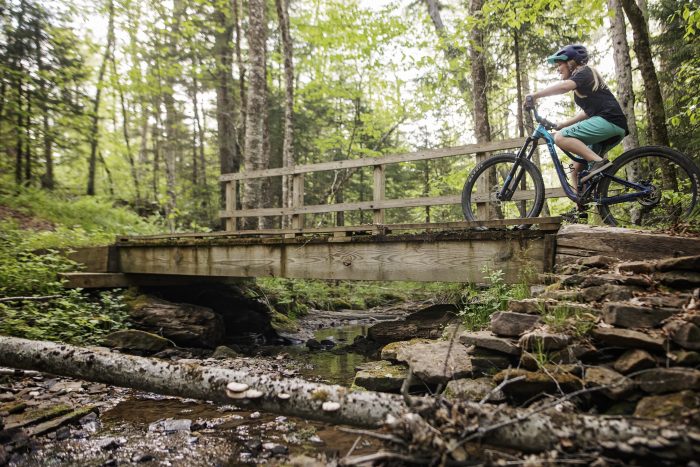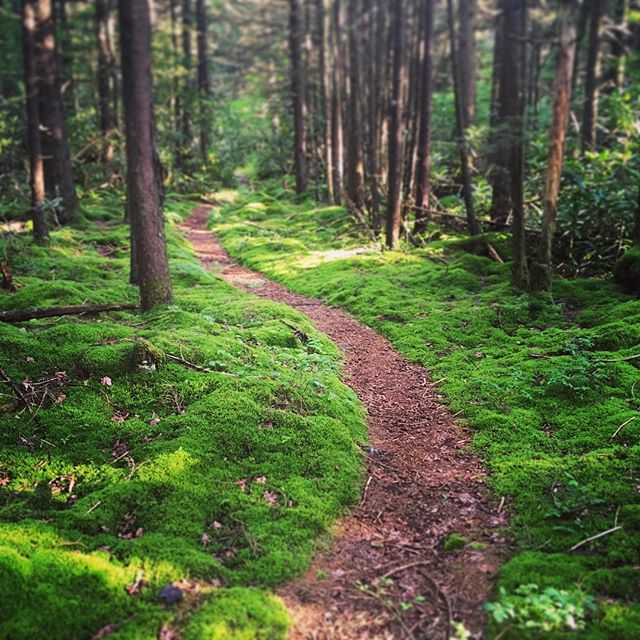Endless Ways to Enjoy the Monongahela National Forest in Pocahontas County
Mike Moore
Many of the larger-than-life objects of this world we’ve come to prize and value so highly today, it could be argued, most likely hail from humble beginnings. The Grand Canyon may have begun as nothing more than a quiet, unassuming mountain stream, the Great Pyramid of Giza probably got under way when someone set that first stone down declaring, “Let’s build it here!” and Santa Clause was once a small, baby boy. You get the idea.
Now here in Pocahontas County, West Virginia, a true larger-than-life entity (in tourist visitation as well as geographically speaking), is the mighty Monongahela National Forest. At over 900,000 acres and with an estimated visitation of more than one million tourists annually, the Monongahela National Forest is nothing short of an epic, outdoor travel destination. But this heavyweight didn’t start out on such a grand scale. Four years after the 1911 passage of the Weeks Act (allowing the federal purchase of land for long-term protection and management), the federal government obtained 7,200 acres of land near Parsons, West Virginia and designated it the Monongahela Purchase. On April 28, 1920, the official name was changed to the Monongahela National Forest and this American treasure has grown by leaps and bounds to its present day standing of just less than one million acres of protected and managed forest land.
And while we here at Nature’s Mountain Playground can’t lay claim to the entire forest, we can boast that more than one-third of this amazing national forest falls within our great county – that’s over 300,000 acres folks! So now the inescapable question becomes, what does one do with more than 300,000 acres of national forest? Well, we have a few thoughts on that subject. So here’s a quick look at things to do in Monongahela National Forest.
Camping
Camping in the Monongahela National Forest can take lots of different forms. Whether you’re driving an RV, towing a camper, or packing a tent in your backpack, nothing beats time in the woods camping the way that suits you best. If your idea of a relaxing getaway requires little more than a level spot for the camper, a fire ring, and your favorite camp chair, here are a couple sites in Pocahontas County that might be just what you’re looking for.
Pocahontas Campground, located on Route 92 about 14 miles from Marlinton, offers eight sites suitable for tent or trailer camping. Available on a first come, first serve basis, each campsite has a parking spur, picnic table, fire ring with a grill and a lantern hookup as well as waste receptacles. For those campers that can’t wait to get out and explore the national forest, or for families with a little hiking guide in the making, this campsite offers immediate access to Two Lick Trail #456 and Two Lick Bottom Trail #457 with the trailhead for both located at the entrance of the campground. Also, you might want to check out the Rimel Area Trailhead and Picnic Area just a short three-mile drive to access Laurel Creek Trail #466 and Middle Mountain Trail #608. Of course, you might also just want to relax by the campfire and enjoy the solitude. That’s okay too.
Our next camping site to consider is the Williams River Sites. These 30 separate, rustic campsites are located along the Williams River Road (designated as FR 86 and 216) and offer easy access to the Williams River for those of you looking to land a trout or two during your visit. All sites are suitable for tent or trailer camping, and each has a parking spur, picnic table, fire ring with grill, lantern hanger, and waste receptacle. If you’re looking for a relaxing campsite to focus on a little fishing and simple relaxing, the Williams River Sites are an ideal way to enjoy the Monongahela National Forest.
Hiking and Backpacking

One of the more appealing attractions of the Monongahela National Forest is hiking and backpacking. Whether you’re visiting for a week or just making a day trip to Nature’s Mountain Playground, hitting a hiking trail or two is a great way to explore things at your own pace. And with over 500 miles of hiking trails throughout those 300,000 acres of national forest that call Pocahontas County home, we’ll bet you’ll have a hard time picking just one trail to explore.
While the Highland Scenic Highway is known for its breathtaking views during fall weather and a pleasant driving experience, it also provides access to a number of trailheads perfect for day hikes. Many of these trails weave their way back towards the Cranberry Wilderness area and are ideal for hikers that are looking for an opportunity to do some bird watching or hoping to spot other forest animals. Trail maps for the Highland Scenic Highway detail the multiple trails in the area as well as their names and trail length. Many believe these trails are some of the best hikes in Monongahela National Forest. A map of the Highland Scenic Highway and corresponding trails in that area is available through our Pocahontas County Visitors Centers.
If you’re already hiking around the Highland Scenic Highway, you don’t want to miss the chance to check out the Cranberry Glades Botanical Area. This 750-acre protected acidic wetland (or bog, as it’s more commonly called) is the largest sphagnum bog in the state of West Virginia. Flora and fauna are key attractions to this unique site which is home to a couple carnivorous plants and a variety of wildflowers. Keep a sharp eye out for the usual West Virginia wildlife like deer and black bear, but don’t be surprised if you happen to see a bald eagle as well. Strike out on your own along the wheelchair-accessible board walk as it skirts the edge of the glade and loops back through tall stands of hemlock and spruce or contact the Cranberry Mountain Nature Center to learn more about their scheduled tours.
Another truly unique hiking opportunity in our neck of the woods is the Falls of Hills Creek. Located about six miles west of the Cranberry Mountain Nature Center, this trio of waterfalls are found within a narrow gorge descending 220 feet, creating three separate falls of 25, 45, and 63 feet in height. The lower fall, at 63 feet tall, is the second highest fall in the state. Access to the falls is made possible by a three-quarter-mile trail, the first 1700 feet of which is paved and wheel-accessible to the first fall. The remainder of the trail is essentially a descending staircase and boardwalk to the second and third fall.
Mountain Biking

Each year we see more and more mountain bikers visiting Nature’s Mountain Playground. And why not? With riding destinations like the Greenbrier River Trail and Snowshoe Mountain Resort, Pocahontas County is quickly becoming the go-to riding destination east of the Mississippi. And while the leisurely pace of the Greenbrier River Trail or the thrill of downhill trail riding on Snowshoe certainly have their place for many riders, there are those that look for something else. A ride in remote back country – something off the beaten path. This is where riding in a national forest really shines. Mountain biking in the Monongahela National Forest is currently permitted on several of the forest service roads. Although these roads may be gated off to prevent public, motorized use, biking is generally allowed except in designated Wildernesses and in a few special places like the Cranberry Glades Botanical Area. Be sure to check with the U.S. Forest Service for current standings of forest service road use and ask about purchasing your own copy of a Monongahela National Forest map to help find new roads to ride and explore.
Well, with access to more than 300,00 acres of national forest at your feet we’ve only begun to scratch the surface of ways you can enjoy the Monongahela National Forest. Whether you’re looking to hunt, fish, hike, bike, camp, or just explore some pristine wilderness with a camera and stout walking stick in hand, the Monongahela National Forest has something for everyone. Why not make plans to visit us here in Nature’s Mountain Playground and find your own way to enjoy the larger-than-life Monongahela National Forest.

